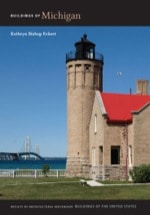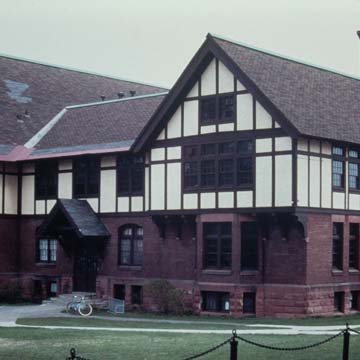You are here
ROTC Building (Clubhouse and Gymnasium)
The oldest remaining building on campus and the fourth erected is the Tudor Revival clubhouse and gymnasium. It contains a running track suspended from the roof trusses in the western wing. This, together with the buildings that comprised the old campus at the completion of the first building campaign in 1908, flanked Hubbell Hall (Michigan School of Mines, 1887–1889), a Richardsonian Romanesque sandstone building by John Scott and Company of Detroit. Hubbell Hall was demolished in 1968 and replaced by the eleven-story Mechanical Building. Overlooking the Portage Canal at East Houghton, the old buildings once lined the 300 block of College Avenue, “a street as beautiful as North Avenue in Cambridge, Mass.,” according to the school's eastern-educated promoters.
Writing Credits
If SAH Archipedia has been useful to you, please consider supporting it.
SAH Archipedia tells the story of the United States through its buildings, landscapes, and cities. This freely available resource empowers the public with authoritative knowledge that deepens their understanding and appreciation of the built environment. But the Society of Architectural Historians, which created SAH Archipedia with University of Virginia Press, needs your support to maintain the high-caliber research, writing, photography, cartography, editing, design, and programming that make SAH Archipedia a trusted online resource available to all who value the history of place, heritage tourism, and learning.









